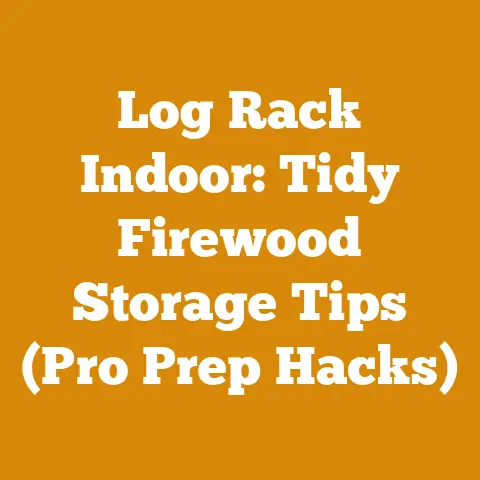Making Shiplap Woodboards (Step-by-Step Joinery Guide)
Unlocking the Secrets to Shiplap: A Step-by-Step Joinery and Cost Guide
Ever glanced at a beautifully shiplapped wall and thought, “I could do that?” I know I have! There’s something incredibly satisfying about transforming raw wood into a stunning, textured surface. But before you dive headfirst into a shiplap project, it’s crucial to understand the process and, more importantly, the costs involved. This isn’t just about slapping boards on a wall; it’s about craftsmanship, precision, and making smart financial decisions. Think of this guide as your personal roadmap, navigating you through the joinery techniques and the often-murky waters of wood processing and budgeting.
Understanding the Allure of Shiplap and Its Cost Drivers
Shiplap, with its distinctive overlapping edges, has surged in popularity, adding rustic charm and visual interest to homes across the globe. But what exactly makes it so appealing, and what factors influence the overall cost?
The Enduring Appeal of Shiplap
Shiplap’s allure lies in its versatility and timeless aesthetic. It seamlessly blends into various design styles, from farmhouse chic to modern minimalist. Beyond aesthetics, shiplap offers practical benefits:
- Concealing Imperfections: It’s a fantastic way to cover uneven walls or unsightly damage.
- Adding Insulation: Provides a slight boost to insulation, especially when installed with a vapor barrier.
- Enhancing Acoustics: Can help dampen sound, particularly in larger rooms.
Key Cost Drivers in Shiplap Projects
The cost of a shiplap project can vary significantly depending on several factors. Understanding these drivers is the first step towards creating an accurate budget:
- Wood Species: The type of wood you choose will have the most significant impact on your material costs. Pine is generally the most affordable option, while hardwoods like oak or maple will be considerably more expensive.
- Wood Quality: Lumber grades play a crucial role. Select grades (clear, free of knots) are more expensive than common grades (containing knots and imperfections).
- Surface Area: The size of the wall or area you plan to shiplap directly affects the amount of lumber required.
- Labor Costs (DIY vs. Professional): If you’re tackling the project yourself, your labor is “free” (though it does cost time!). Hiring a professional carpenter will add a significant expense.
- Finishing Materials: Paint, stain, sealant, and other finishing materials contribute to the overall cost.
- Tools and Equipment: While you might have some basic tools, you may need to invest in specialized equipment like a miter saw or nail gun.
- Location and Accessibility: Where you live and how easy it is to access the project site can influence material delivery costs.
Step-by-Step Guide to Crafting Shiplap Woodboards
Before diving into the financial aspects, let’s walk through the process of creating your own shiplap woodboards. This will give you a better understanding of the materials and tools involved, which directly impacts the cost.
Step 1: Planning and Design
Measure the Space: Accurately measure the wall or area you intend to cover with shiplap. This will help you determine the amount of lumber needed. I always recommend adding 10-15% extra for waste and cuts.
Determine Board Width: Decide on the desired width of your shiplap boards. Common widths range from 4 to 8 inches. Wider boards cover more area quickly but may look less detailed.
Choose a Shiplap Style: There are several shiplap styles, including:
- Traditional Shiplap: Boards with a rabbeted edge (a groove cut into the edge) that creates the overlapping joint.
- Nickel Gap Shiplap: Boards with a small gap (usually the width of a nickel) between them. This can be achieved with spacers during installation.
- Butt Joint Shiplap: Simple boards installed edge-to-edge without any overlapping or gaps.
Create a Design Plan: Sketch out your design, noting the board width, spacing, and any special features like accent walls or patterns.
Step 2: Selecting the Right Lumber
Wood Species: As mentioned earlier, pine is a popular and affordable choice for shiplap. However, consider other options based on your budget and desired aesthetic:
- Pine: Softwood, easy to work with, accepts paint and stain well.
- Cedar: Naturally resistant to rot and insects, ideal for humid environments. More expensive than pine.
- Poplar: Hardwood, smooth grain, excellent for painting.
- Oak/Maple: Durable hardwoods, beautiful grain patterns, best suited for staining. Significantly more expensive.
Lumber Grade: Choose lumber that is straight, free of excessive knots, and has minimal warping or cupping.
- Select Grades (e.g., Clear Pine): Minimal knots, premium appearance, highest price.
- Common Grades (e.g., #2 Common Pine): More knots and imperfections, lower price.
Board Dimensions: Standard lumber dimensions are nominal (e.g., a “1×6” board is actually 3/4 inch thick and 5 1/2 inches wide). Account for these actual dimensions when calculating your lumber needs.
My Experience: I once tried to save money by using extremely knotty pine for a shiplap wall. It was a nightmare! The knots were difficult to work around, and the finished product looked amateurish. I learned my lesson – investing in better-quality lumber is worth it in the long run.
Step 3: Preparing the Woodboards
Cutting the Boards: Use a miter saw to cut the boards to the desired length. Ensure accurate and consistent cuts for a professional finish.
Creating the Rabbeted Edge (for Traditional Shiplap): If you’re making traditional shiplap, you’ll need to create a rabbeted edge on each board. This can be done using a router with a rabbeting bit or a table saw with a dado blade. The rabbet should be wide and deep enough to allow the boards to overlap snugly.
Sanding the Boards: Sand the boards smooth using progressively finer grits of sandpaper (e.g., 80-grit, 120-grit, 220-grit). This will remove any splinters and create a smooth surface for painting or staining.
Priming the Boards (Optional): Priming the boards before installation can help improve paint adhesion and prevent knots from bleeding through.
Step 4: Installation
Locating Studs: Use a stud finder to locate the wall studs. Mark the stud locations with a pencil.
Installing the First Board: Start at the bottom of the wall and install the first board level. Use a level to ensure it’s perfectly horizontal. Attach the board to the studs using a nail gun or screws.
Installing Subsequent Boards: Overlap the rabbeted edge of the next board onto the previous board (for traditional shiplap). For nickel gap shiplap, use spacers (e.g., nickels or specialized shiplap spacers) to create a consistent gap between the boards.
Cutting Boards to Fit: As you work your way up the wall, you’ll likely need to cut boards to fit around windows, doors, or other obstacles. Use a jigsaw or miter saw for these cuts.
Finishing Touches: Once all the boards are installed, fill any nail holes with wood filler. Sand the filler smooth and touch up with paint or stain.
Step 5: Finishing
Painting or Staining: Apply your chosen paint or stain to the shiplap boards. Use a brush, roller, or sprayer for even coverage.
Sealing (Optional): Apply a sealant to protect the finish and make the shiplap easier to clean.
My Pro Tip: When staining shiplap, apply a wood conditioner first. This will help the stain absorb evenly and prevent blotchiness, especially on softwoods like pine.
Diving Deep into the Costs: A Detailed Breakdown
Now that we’ve covered the process, let’s get down to the brass tacks: the costs! I believe in transparency, so I’ll break down each cost component and provide real-world examples and data points.
1. Lumber Costs: The Foundation of Your Budget
Lumber costs are the most significant expense in a shiplap project. Here’s a detailed look at how to estimate them:
Calculating Lumber Needs:
- Area to Cover: Multiply the wall height by the wall width to get the total area in square feet.
- Board Coverage: Calculate the area covered by a single board. For example, a 1×6 board (actual dimensions 3/4″ x 5 1/2″) that is 8 feet long covers approximately 3.67 square feet (5.5 inches / 12 inches/foot * 8 feet = 3.67 sq ft).
- Number of Boards: Divide the total area to cover by the area covered by a single board.
- Add for Waste: Add 10-15% to account for cuts and waste.
Example Calculation:
Let’s say you want to shiplap a wall that is 10 feet wide and 8 feet high. You’re using 1×6 boards that are 8 feet long.
- Area to Cover: 10 feet x 8 feet = 80 square feet
- Board Coverage: 3.67 square feet (as calculated above)
- Number of Boards: 80 square feet / 3.67 square feet/board = 21.8 boards
- Add for Waste (10%): 21.8 boards x 0.10 = 2.18 boards
- Total Boards Needed: 21.8 boards + 2.18 boards = 24 boards (round up to the nearest whole board)
Lumber Pricing:
Lumber prices fluctuate based on market conditions, location, and supplier. Here are some approximate prices per board foot (BF) for different wood species:
| Wood Species | Average Price per BF (USD) | Notes |
|---|---|---|
| Pine | $1.50 – $3.00 | Prices vary based on grade (select vs. common) and region. |
| Cedar | $4.00 – $6.00 | Naturally rot-resistant, ideal for humid climates. |
| Poplar | $3.00 – $5.00 | Smooth grain, excellent for painting. |
| Oak | $6.00 – $10.00 | Durable hardwood, beautiful grain patterns. |
| Maple | $7.00 – $12.00 | Similar to oak in terms of durability and aesthetics. |
Converting Board Feet to Linear Feet:
To calculate the cost of your lumber, you need to convert board feet to linear feet. The formula is:
- Board Feet = (Thickness in inches x Width in inches x Length in feet) / 12
For example, a 1×6 board that is 8 feet long has:
- Board Feet = (1 inch x 6 inches x 8 feet) / 12 = 4 board feet
Calculating Total Lumber Cost:
Multiply the number of board feet needed by the price per board foot.
- Example: If you need 24 boards of 1×6 pine (4 board feet per board) and the price is $2.00 per board foot, the total lumber cost would be: 24 boards x 4 board feet/board x $2.00/board foot = $192.00
Data Point: According to the National Association of Home Builders (NAHB), lumber prices have experienced significant volatility in recent years due to factors like tariffs and supply chain disruptions. Monitoring market trends can help you time your purchase to minimize costs.
2. Tool and Equipment Costs: Investing in Quality
While you might already have some basic tools, you may need to invest in specialized equipment for a shiplap project.
Essential Tools:
- Miter Saw: For making accurate cuts.
- Nail Gun or Drill/Screws: For attaching the boards to the wall.
- Stud Finder: For locating wall studs.
- Level: For ensuring the boards are level.
- Measuring Tape: For accurate measurements.
- Pencil: For marking cuts and stud locations.
- Safety Glasses and Hearing Protection: For safety.
Optional Tools:
- Router with Rabbeting Bit or Table Saw with Dado Blade: For creating rabbeted edges (for traditional shiplap).
- Jigsaw: For making curved cuts around obstacles.
- Sander: For smoothing the boards.
Cost Estimates:
| Tool/Equipment | Average Cost (USD) | Notes |
|---|---|---|
| Miter Saw | $100 – $500+ | Prices vary based on size, features, and brand. |
| Nail Gun | $50 – $300+ | Pneumatic or cordless options available. |
| Stud Finder | $10 – $50 | Basic stud finders are affordable, while more advanced models offer greater accuracy. |
| Router | $80 – $300+ | Needed only for creating rabbeted edges. |
| Sander | $50 – $200+ | Orbital sanders are ideal for smoothing large surfaces. |
Rental vs. Purchase:
Consider renting tools if you only plan to use them for this project. Rental costs typically range from $20 to $50 per day for tools like miter saws or routers.
My Experience: I initially tried to cut corners by using a cheap, low-quality miter saw. The cuts were inaccurate, and the saw was difficult to use. I ended up wasting a lot of lumber and time. Investing in a decent miter saw made a world of difference in the quality and efficiency of the project.
3. Finishing Material Costs: Adding the Final Touch
Finishing materials include paint, stain, sealant, and other supplies needed to complete the project.
Cost Estimates:
| Material | Average Cost (USD) | Notes |
|---|---|---|
| Paint | $20 – $50/gallon | Choose a high-quality paint that is suitable for interior use. |
| Stain | $15 – $40/quart | Consider using a wood conditioner before staining to ensure even absorption. |
| Sealant | $10 – $30/quart | Protects the finish and makes the shiplap easier to clean. |
| Wood Filler | $5 – $15 | For filling nail holes and imperfections. |
| Sandpaper | $10 – $20 | Assorted grits for sanding the boards smooth. |
| Paintbrushes/Rollers | $10 – $30 | Invest in quality brushes and rollers for a smooth finish. |
Calculating Material Needs:
- Paint/Stain: Estimate the amount of paint or stain needed based on the surface area to be covered. A gallon of paint typically covers 350-400 square feet.
- Sealant: Similar to paint, estimate the amount of sealant needed based on the surface area.
My Pro Tip: Don’t skimp on the finishing materials. High-quality paint and stain will provide better coverage, durability, and a more professional finish.
4. Labor Costs: DIY vs. Hiring a Professional
If you’re tackling the shiplap project yourself, your labor is “free” (though it does cost time!). However, if you’re hiring a professional carpenter, labor costs can be a significant expense.
Estimating Labor Costs:
- Hourly Rate: Carpenters typically charge between $50 and $100 per hour, depending on experience and location.
- Project-Based Pricing: Some carpenters may offer a fixed price for the entire project.
- Time Estimate: Estimate the amount of time it will take to complete the project. This will depend on the size of the area, the complexity of the design, and the carpenter’s skill level.
Example Calculation:
Let’s say you hire a carpenter who charges $75 per hour, and they estimate the project will take 20 hours.
- Total Labor Cost: $75/hour x 20 hours = $1500
DIY Considerations:
If you’re doing the project yourself, factor in the value of your time. Is it worth spending your weekends working on the project, or would you rather hire a professional and free up your time?
Data Point: According to HomeAdvisor, the average cost to install shiplap professionally ranges from $1,000 to $2,500, depending on the size and complexity of the project.
5. Other Potential Costs: Permits, Delivery, and Unexpected Expenses
Don’t forget to factor in these potential costs:
- Permits: In some areas, you may need a permit to install shiplap, especially if you’re making structural changes to the wall.
- Delivery Fees: If you’re having lumber delivered, factor in the cost of delivery.
- Unexpected Expenses: Always set aside a contingency fund (5-10% of the total budget) to cover unexpected expenses, such as hidden damage or additional materials.
Case Studies: Real-World Shiplap Project Costs
To illustrate the cost factors in action, let’s examine a couple of real-world case studies.
Case Study 1: DIY Shiplap Accent Wall (Pine)
- Project: DIY shiplap accent wall in a bedroom.
- Area: 10 feet wide x 8 feet high (80 square feet)
- Lumber: Pine 1×6 boards
- Shiplap Style: Nickel Gap
- Finishing: Painted white
Cost Breakdown:
- Lumber: $192.00 (as calculated in the lumber cost section)
- Tools (Existing): $0 (already owned miter saw, nail gun, etc.)
- Finishing Materials: $75 (paint, wood filler, sandpaper)
- Labor: $0 (DIY)
- Total Cost: $267.00
Analysis: This project was relatively inexpensive because the homeowner did the work themselves and already owned the necessary tools. The use of pine lumber also helped keep costs down.
Case Study 2: Professional Shiplap Installation (Oak)
- Project: Professional shiplap installation in a living room.
- Area: 15 feet wide x 10 feet high (150 square feet)
- Lumber: Oak 1×6 boards
- Shiplap Style: Traditional Shiplap (rabbeted edges)
- Finishing: Stained and sealed
Cost Breakdown:
- Lumber: $1200 (oak is significantly more expensive than pine)
- Tools (Contractor Provided): $0
- Finishing Materials: $150 (stain, sealant, wood filler)
- Labor: $2250 (30 hours at $75/hour)
- Total Cost: $3600
Analysis: This project was significantly more expensive due to the use of oak lumber and professional installation. The labor costs accounted for a large portion of the total expense.
Tips for Optimizing Costs and Staying on Budget
Here are some practical tips to help you optimize costs and stay on budget on your shiplap project:
- Assess Your Skills and Budget: Determine whether you want to DIY the project or hire a professional.
- Measure and Plan: Accurately measure the area you want to shiplap and create a detailed design plan.
- Choose Your Lumber: Select the wood species and grade that fits your budget and aesthetic preferences.
- Gather Your Tools and Materials: Make a list of the tools and materials you need and start shopping around for the best deals.
- Create a Budget: Use the cost breakdown provided in this guide to create a detailed budget for your project.
- Start Building! Follow the step-by-step instructions to craft your own shiplap woodboards and transform your space.
Final Thoughts: Embracing the Shiplap Journey
Creating shiplap woodboards is a rewarding project that can add beauty and value to your home. By understanding the process, carefully planning your budget, and following the tips in this guide, you can achieve a professional finish without breaking the bank. Remember, it’s not just about the destination (the finished shiplap wall); it’s about the journey of creating something beautiful with your own hands. So, grab your tools, embrace the challenge, and get ready to transform your space with the timeless charm of shiplap!






